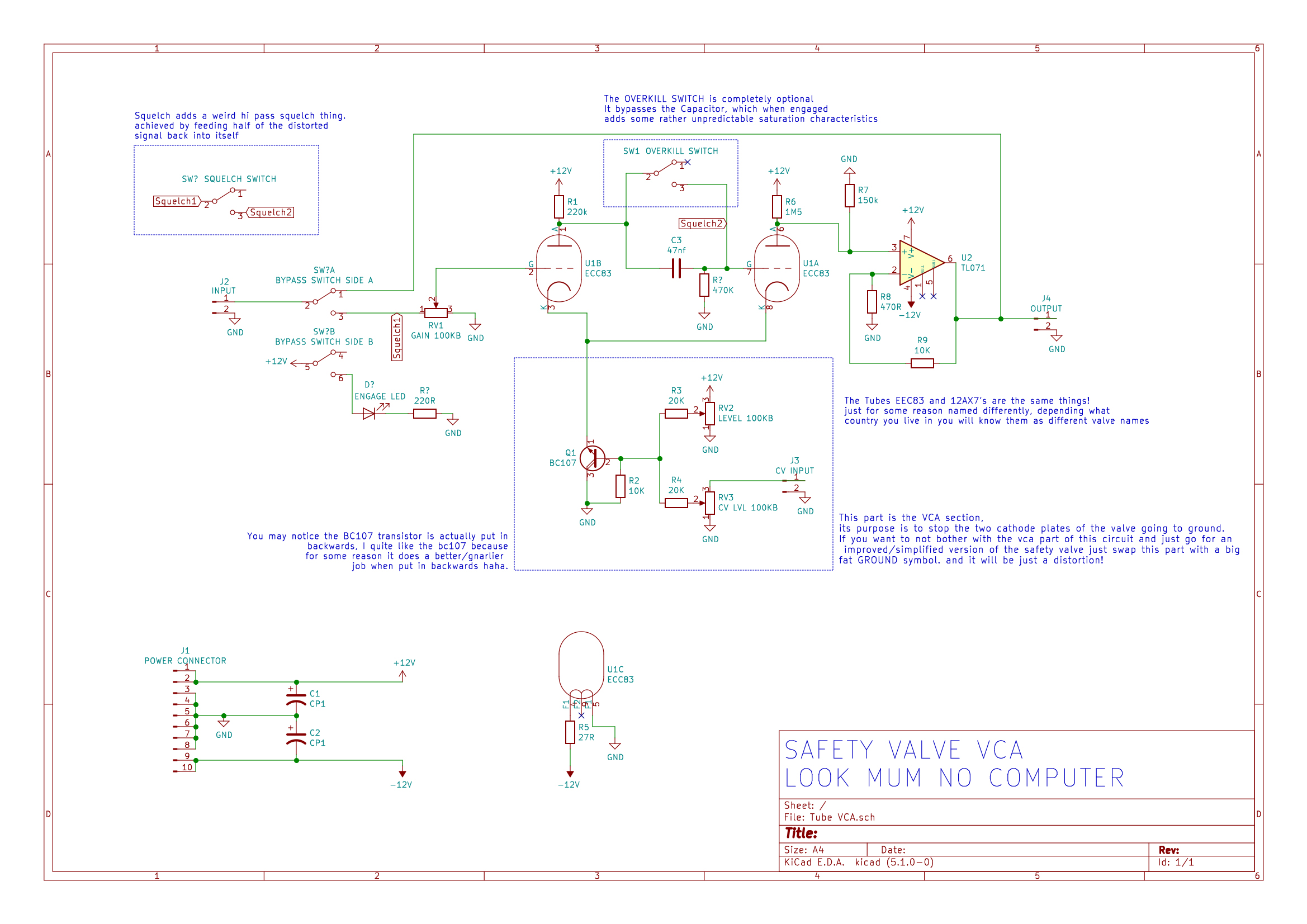Hi everyone,
i built this on breadboard, it runs from +12 and -12 volts.
Circuit works, besides the error of pin4 and 5 inverted in the schematic layout compared to the veroboard layout(which is good) the rest looks right but i can't make it work by myself on my breadboard.
I built it 3 times already, same issue each time.
I can visualise on the oscilloscope the waveform entering pin 2 and going out of pin 1 and then into pin 7 but i have no signal at all just a 1.2v steady dc fixed voltage at pin 6, no waveform, same thing at the opamp input at the right on the schematic.
Any ideas what can happen?
I verified everything so many times already, the tube filament heats up, i have an oscilloscope and multimeter i can test what ever you suggest.
Forget about the switches for the moment that are on the schematic i dont wire them up just to keep it simple.
But one time i tried to add the bypass switch shown at the left and while the breadboard not powered i could see the waveform that i put at the input socket going into the power suply, i mean by that its a eurorack power suply and there is leds for +12 -12 and +5v that show when its active but they were lightning on even if i disconnected the psu from the power source, the sine wave form at the input was going back into the psu bussboard, if that can even give a hint...
The vca part in the blue dotted square at the bottom was working fine i could see the waveform being modulated from the control voltage input that i feed it.
It's really just that the signal doesnt come out of the pin6 of the tube.
Thanks a lot here's the info about the circuit:
https://www.lookmumnocomputer.com/pr...distorting-vca

i built this on breadboard, it runs from +12 and -12 volts.
Circuit works, besides the error of pin4 and 5 inverted in the schematic layout compared to the veroboard layout(which is good) the rest looks right but i can't make it work by myself on my breadboard.
I built it 3 times already, same issue each time.
I can visualise on the oscilloscope the waveform entering pin 2 and going out of pin 1 and then into pin 7 but i have no signal at all just a 1.2v steady dc fixed voltage at pin 6, no waveform, same thing at the opamp input at the right on the schematic.
Any ideas what can happen?
I verified everything so many times already, the tube filament heats up, i have an oscilloscope and multimeter i can test what ever you suggest.
Forget about the switches for the moment that are on the schematic i dont wire them up just to keep it simple.
But one time i tried to add the bypass switch shown at the left and while the breadboard not powered i could see the waveform that i put at the input socket going into the power suply, i mean by that its a eurorack power suply and there is leds for +12 -12 and +5v that show when its active but they were lightning on even if i disconnected the psu from the power source, the sine wave form at the input was going back into the psu bussboard, if that can even give a hint...
The vca part in the blue dotted square at the bottom was working fine i could see the waveform being modulated from the control voltage input that i feed it.
It's really just that the signal doesnt come out of the pin6 of the tube.
Thanks a lot here's the info about the circuit:
https://www.lookmumnocomputer.com/pr...distorting-vca

 late gets meager 12V through 220k resistor, grid is at ground voltage, cathode gets some current through reverse biased Q1, and amplifies.
late gets meager 12V through 220k resistor, grid is at ground voltage, cathode gets some current through reverse biased Q1, and amplifies.







Comment